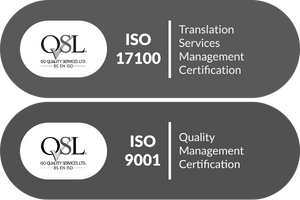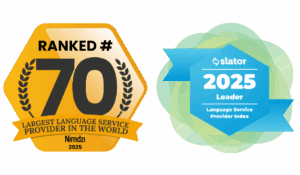Providing culturally sensitive care means taking into account a patient’s cultural background when providing care. Cultural sensitivity is about more than just language. It’s about how an individual sees the world and the importance of family, community and spirituality in their lives. When providers and patients have different cultural values, it can impede the ability to communicate and care for a patient. The provider may not understand the patient’s religious or spiritual beliefs, or the patient may be offended by the provider’s display of cultural artifacts. Providing culturally sensitive care can be stressful. Providers may feel that they are unable to take care of a patient’s health needs.
What is culture?
Culture is a set of ideas, beliefs, values, and knowledge shared by a group of people, influencing their social behaviors, and the range of activities of a group of people with shared traditions, transmitted and reinforced by members of the group.1
A person’s culture can be influenced by their:
- Race
- Religion (or lack thereof)
- National origin
- Ethnicity
- Language
- Sexual orientation and gender identity
- Class
- Age
- Other aspects of their identity and communities they belong to.
How can I interact with patients from diverse cultures?
#1 — Ask, don’t assume.
For example, ask patients about foods they typically eat when teaching about healthy eating, rather than discussing examples of foods they may not eat on a regular basis. Ask patients the name and pronouns they would like you to use to address them.
“About half of your plate should be non-starchy vegetables. So salad would fit in this category, but not mashed potatoes, because potatoes are high in carbohydrates.”
“About half of your plate should be non-starchy vegetables. What are some vegetables you typically eat? I can help you figure out which ones are high and low in carbohydrates.”
#2 — Help patients navigate the healthcare system.
In addition to facing language barriers, Limited English Proficient patients in particular may be unfamiliar with and struggle to navigate the health care system in the US. Ask patients if tasks like getting an authorization from the insurance company or asking the pharmacy to request a medication refill are new experiences or are already familiar. Explain processes clearly and check for understanding using the teach back method, especially when discussing concepts that are new for patients.
“I can’t believe you were off your medication for a week! Next time, get the pharmacy to request a refill before you run out. You need to stay on top of this.”
“You told me that asking the pharmacy to request a refill is something new for you, so I want to make sure I have covered all of the steps with you before you leave. Let’s see—what all did I cover so far? Do you have any more questions about that before we move on to the next topic?”
#3 — Be aware of indigenous cultures.
Central and South America in particular are home to a wide variety of Native American cultures and languages. While patients from some of these areas may speak Spanish, it may not be their first language, and they may have unique cultural traditions. Wherever they may be from, ask your patients about their heritage. If appropriate, ask if they would prefer an interpreter in the indigenous language they speak, particularly if you notice that they are having trouble understanding you or expressing themselves.
[cutting interpreter off] “That’s not relevant, that doesn’t answer my question.”
“You mentioned that at home you speak both Q’anjob’al and Spanish. I know we are working with a Spanish interpreter right now, but would you prefer an interpreter who speaks Q’anjob’al, or do you prefer Spanish?”
#4 — Respect cultural differences.
Culture can influence the medical encounter in many different ways. Your patient’s culture may influence everything from how much physical contact they are comfortable with to how directly they answer questions. If you are not sure about a cultural practice, ask and respect the answer.
As you enter the room to greet your patient, you extend a hand, but she flinches away from your extended hand.
“Nice to meet you. I normally greet my patients with a handshake, if you are comfortable with that. How do you normally greet people?”
#5 — Learn about the communities you serve.
Your organization may collect demographic information on the communities you serve, and as a provider, you may observe firsthand which communities you work with on a regular basis. Once you have identified the communities you serve, do your research. If you serve LGBT patients, you may want to learn about the history of the LGBT rights movement in the US, or how to use gender neutral pronouns. If you serve Mien speakers, you may want to learn about the “Secret War” and the history of Iu Mien refugees in the United States, or traditional holidays celebrated in the Mien community. Knowing about the communities you serve goes a long way.
“You’re a trans woman? Does that mean you’re a woman that wants to be a man, or a man that wants to be a woman?”
“Since you mentioned that you are transgender and just starting your transition, do you want me to update your name in your chart? I can add your name to your chart under “preferred name,” even if it doesn’t match the name on your insurance ID. That way we will call you by the right name and still be able to bill your insurance.”
#6 — Reflect on your culture and that of your workplace. Strive to create an environment that welcomes diverse populations.
For example, does your workplace have a chapel in the lobby or crosses adorning the walls of patient rooms? What about items that might make patients of other faiths feel at home? How do you talk to patients about holidays you celebrate?
“So, what are you doing for Christmas?”
“My family will be celebrating Thanksgiving this week. My whole family shares a meal, and we go around the table and say things we are thankful for. Are there any holidays you are looking forward to this time of year?”
At Linguava, we are dedicated to reducing communication barriers and providing equity to all members of our community through language access services.
If you are interested in learning more about incorporating language access into your organization or would like to book a training session, contact us today.








